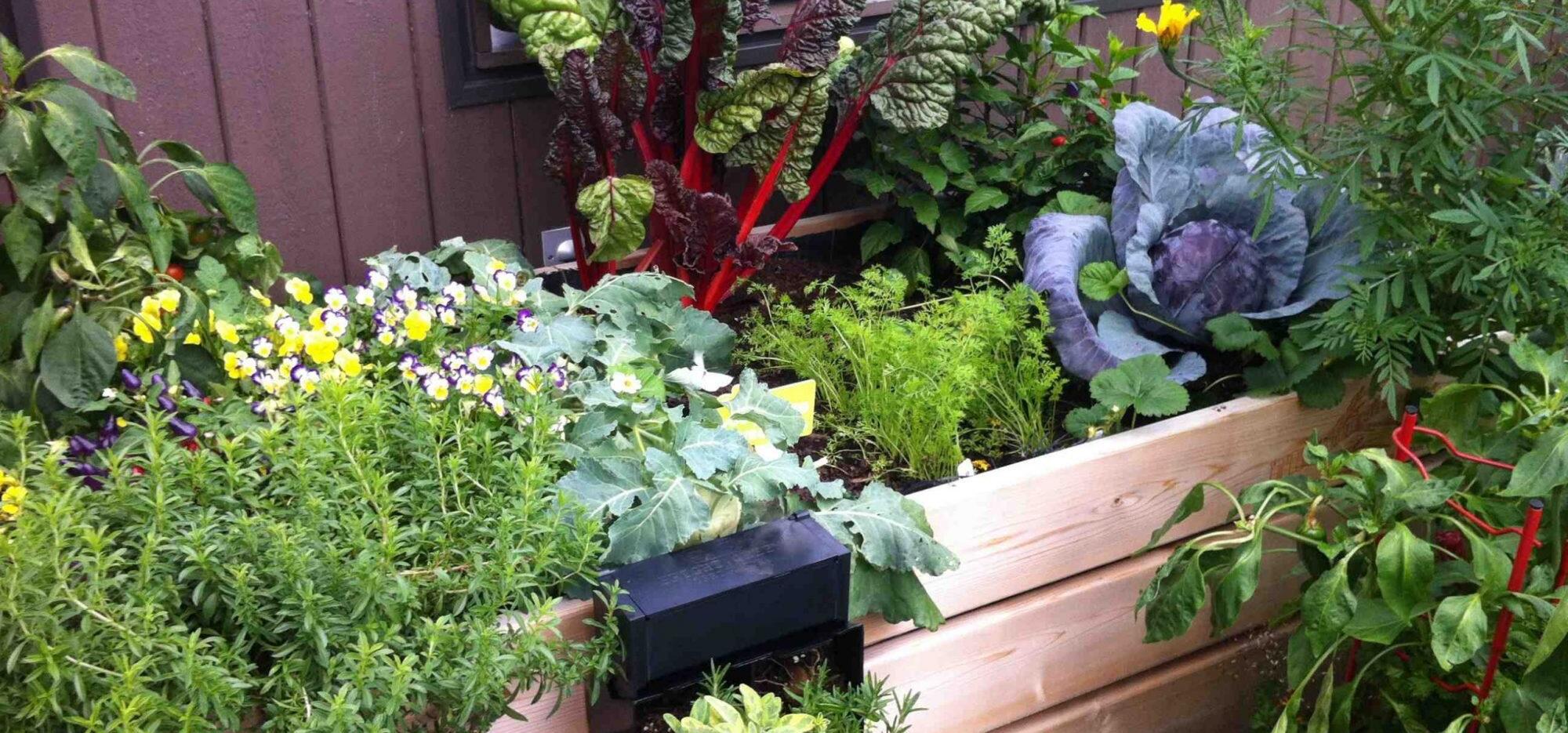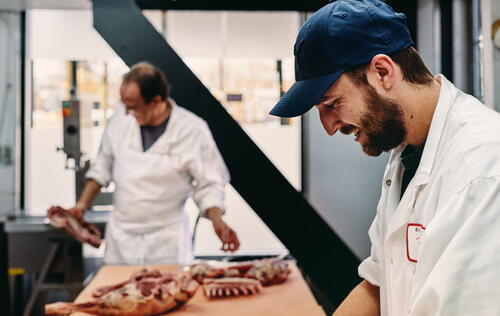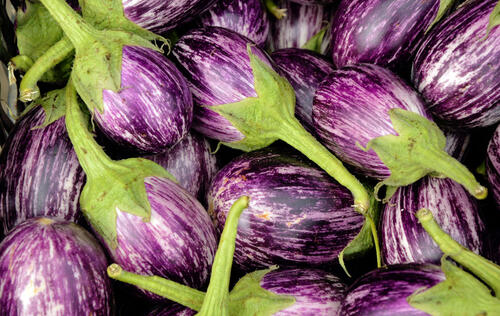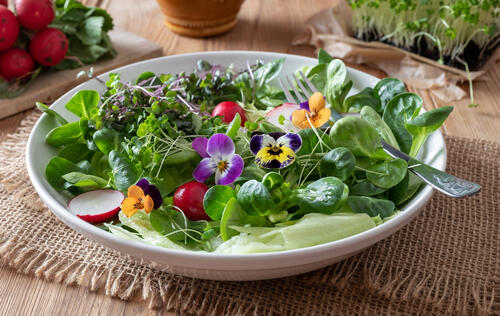Enough with Winter! Start Your Spring Vegetable Garden!

Why wait until late spring or early summer to plant an outdoor vegetable garden? Don’t wait any longer, sow and plant edible plants outside as early as April!
Several vegetables are quite resistant to the cold. Chard, beetroot, chives, kale, cabbage, broccoli, spinach, tarragon, lettuce, lettuce, mint, onion, parsley, leeks, snow peas and radishes can withstand cool temperatures, even below freezing in some cases. These plants can therefore be sown or planted outside, in the ground or in a container, in April or as soon as the temperature exceeds 5ºC.
Protecting Young Plants from Frost
Although most of the vegetables discussed in this article can withstand temperatures below freezing, it’s best to cover seedlings and young plants with an agrotextile when there’s a risk of frost.
Agrotextiles are white, sail-like fabrics that are mainly used to protect crops from insects and birds while they don’t prevent sunlight from reaching the plants or reduce their photosynthetic ability.
Some agrotextiles are insulating and maintain a temperature about 5°C higher than the ambient air around the plant. This means that if the outside temperature falls below freezing, plants covered with agrotextile are simply not affected by frost.
There are several ways to cover edible plants with agrotextile, but the simplest method is certainly to lay it on metal hoops or flexible plastic pipes.
Another effective technique to start the outdoor urban agriculture season early is the use of a cold layer. This is actually a wooden or composite wood formwork 30 to 50 cm high, without a bottom, fixed or transportable, which is covered with a window or any other translucent plastic material (polycarbonate, corrugated polypropylene (coroplast), etc.) The window or the material covering the cold layer can be inclined towards the south, but it’s not a requirement.
The cold layer can be built in several sections which are stacked according to the height of the plants grown. When the weather is sunny and the temperature is warm, it’s very important to open the cold bed to allow ventilation and thus avoid condensation and a harvest of … cooked vegetables! In the evening, close the window completely. Don’t forget to cover your cold layer with straw or a thick blanket in case of a severe frost forecast.
Here are some cold-resistant vegetables that can be sown or planted as early as April.
Beets
The sowing and planting of young beet plants can be done a few weeks before the last spring frost, that is as early as the end of April in the Greater Montréal area.
Beets like full sun and a well-drained clay soil amended with compost. Seeds should be placed in the ground to a depth of about 1 cm (1/2 inch). Beets are usually harvested 60 days after sowing, but the young leaves can also be harvested only 15 to 20 days after germination and eaten in a salad.
Carrots
Carrots can be sown in the ground three to four weeks before the last spring frost. In southwestern Québec, it’s therefore possible to sow this vegetable as early as mid-April to have an early harvest. By sowing again in April, May and June, the harvest will last until the fall. Carrots like full sun, but they are also one of the few vegetables that can tolerate light shade. They thrive in light, cool soil that is well loosened and amended with compost.
The carrot seeds should be placed in the ground to a depth of about 1 cm (1/2 inch). Because the seeds are tiny, it is very difficult to space them properly. You can buy seeds that are coated with clay or sold in a paper tape, which makes sowing much easier. You can also simply try to space your seedlings as well as possible and then leave all the plants in place without thinning. However, the carrots you’ll harvest will vary in size. Depending on the cultivar, harvesting usually takes place between 50 and 70 days after sowing.
Kale
Kale is actually a cabbage with curly leaves that never take on a cabbage shape. Since it’s particularly cold hardy, seeds of this vegetable can be sown outdoors as early as mid-April. The seeds should be sown to a depth of 1 cm (1/2 inch). It’s also possible to transplant kale seedlings that you have grown indoors to the garden.
Kale prefers rich, moist clay soils with six or more hours of sunlight.
Lettuce
Since lettuce doesn’t tolerate summer heat, it’s best to plant it in the ground in late April or May so that it can be harvested by mid-July. Whether planted in full sun or part shade, this leafy vegetable grows well in light, cool, well-loosened soil amended with a little compost.
Pak choi
Pak choi – also known as bok choy – is an Asian cabbage cultivar with white stems and veins. This vegetable is known for its tolerance to the cold and can be grown early in the season, in April and May. Early sowing avoids the summer heat that usually initiates flowering and spoils its flavour. Asian Delight, Canton and Joi Choi are a few varieties that do not flower as quickly in hot weather.
Pak choi enjoys full sun and light, compost-rich, cool and well-drained soil. Transplanting is difficult, so it is best to sow directly in the ground. It can be harvested within 45 to 50 days after sowing.
Leeks
Contrary to popular belief, leeks are not an annual vegetable but rather a very hardy perennial one. As with asparagus and rhubarb, it can be sown once while a few plants can be left in the garden each fall when harvested. Leeks can be sown early in mid-April or in May.
The plants left in place in the fall will flower the following spring, producing pretty pink and white spheric flowers. After flowering, the plant will produce a host of offshoots that form a dense clump at its base. The following autumn and winter, you can harvest a few stems from this clump, leaving two or three in place for next year’s harvest.
Snow Peas
Since they are particularly cold hardy, snow peas can be sown as early as mid-April in the Greater Montréal area. There’s no need to wait for fruit production before eating this vegetable and the young shoots can be harvested three to four weeks after sowing.
Radishes
Because they are particularly cold tolerant, radishes are one of the earliest vegetables that can be sown in the garden, as soon as the ground thaws in April. Since radishes grow very quickly, you can expect to harvest them only 30 days after sowing.
Arugula
The best way to spread arugula is to sow it in the ground in spring as soon as the soil temperature exceeds 10ºC, that is towards the end of April or the beginning of May. It’s simply a matter of putting the seeds in the ground to a depth of about 6 mm. There’s no need to space the seeds more than a few centimetres apart since arugula can be harvested as young shoots about 30 days after sowing.
Grown in full sun or part shade, in humus-rich, light and cool soil, arugula produces excellent crops. Arugula is one of the few vegetables that tolerate light shade. As a plant well adapted to cool climates, arugula flowers when the soil temperature exceeds 18ºC which spoils its flavour. Therefore, it’s best to grow it in spring and autumn, and to sow it again every 20 to 30 days in order to obtain several harvests of fresh young leaves.




